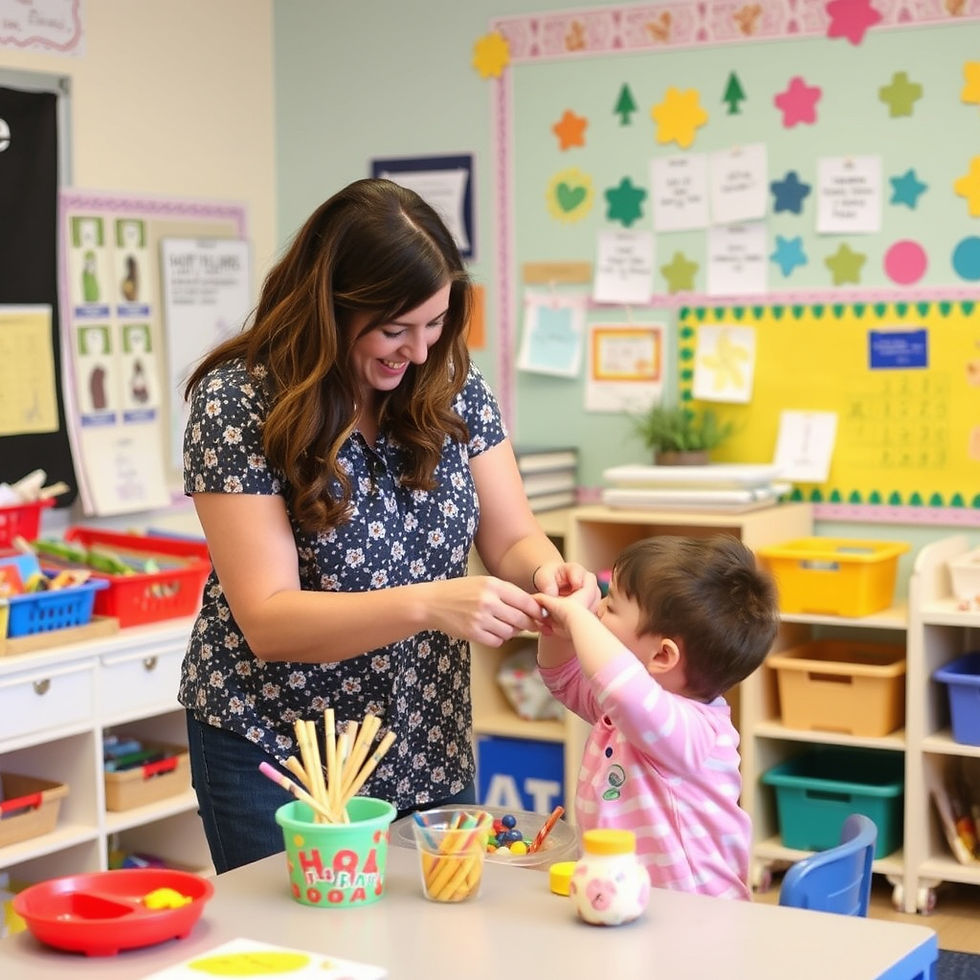Unlocking the Wonders of Nature: Child-Led Learning Experiences for Early Childhood Professionals
- Wild About Learning

- Mar 9
- 4 min read
In today's fast-paced, technology-driven world, finding ways to engage young learners in authentic experiences can be a challenge for educators. However, nature offers an abundance of opportunities for child-led learning that not only ignite curiosity but also foster essential skills. By embracing the natural environment, educators can create vibrant, exploratory learning experiences that children will remember for a lifetime.
The Benefits of Nature-Based Learning
Research consistently shows that children learn best when they are actively engaged. Nature-based learning encourages outdoor exploration, which promotes physical, emotional, and cognitive development. By immersing children in the natural world, educators allow them to connect with their surroundings while nurturing critical thinking and problem-solving skills.
The benefits of these experiences extend beyond mere play. Children engaged in outdoor learning are more likely to develop a sense of wonder and appreciation for the environment. They also gain practical skills as they learn to observe, ask questions, and engage in hands-on experiences. All these components make nature an ideal classroom.

Creating a Child-Led Exploration Framework
To facilitate effective child-led learning in nature, educators can implement a few key concepts that promote exploration, curiosity, and discovery.
1. Foster Inquiry-Based Learning
Inquiry-based learning encourages children to ask questions and explore their interests. Instead of providing them with all the answers, educators can guide students to formulate their own inquiries. For instance, if children express curiosity about the life cycle of butterflies, teachers can facilitate a nature walk to observe and document their findings.
These inquiry-based experiences enhance children's ability to think critically and cultivate a lifelong love for learning.
2. Encourage Play-Based Exploration
Play is an essential component of early childhood education, and nature provides the perfect backdrop for play-based exploration. Encourage children to engage in unstructured play, where they can build, create, and imagine within an outdoor setting.
Activities such as building forts from sticks, painting with mud, or organizing scavenger hunts can spark creativity and imagination. These activities not only promote fun but also support social development as children collaborate and share their ideas.

3. Integrate All Senses
Nature is a feast for the senses, and children can learn so much when they engage all their senses in the learning process. Encourage them to touch the rough bark of a tree, listen to the rustling leaves, smell the fresh earth after a rain, and observe the colors of flowers.
For example, educators could design sensory stations in outdoor classrooms where children can explore different elements of nature through touch, sound, sight, and smell. This multi-sensory approach not only enriches the learning experience but also caters to different learning styles.
4. Create a Connection to the Environment
Teaching children about their natural surroundings helps to instill respect and gratitude for the environment. By introducing concepts such as ecosystems, biodiversity, and conservation, educators can encourage children to become environmental stewards.
Incorporating activities like planting a garden, conducting clean-up days, or tracking wildlife patterns not only makes learning meaningful but also empowers children to take action and connect with their community.
Activities to Embrace Nature
To help early childhood educators embrace nature in their child-led learning experiences, consider these activity ideas:
1. Nature Journals
Encourage children to keep nature journals where they can document their observations, drawings, and questions about their outdoor experiences. This can help them build skills in writing and illustration while developing a deep appreciation for the natural world.
2. Exploration Stations
Set up themed exploration stations in various outdoor settings. For example, create a bug hotel, a birdwatching station, or an art station where children can create masterpieces using natural materials.
3. Seasonal Activities
Embrace the changing seasons with relevant activities. In spring, conduct flower identification walks; in summer, explore water play; in autumn, collect leaves for a craft project; and in winter, explore hibernation in animals.
Overcoming Challenges
While the benefits of nature-based learning are clear, some educators may face challenges when integrating these experiences into their programs.
1. Safety Concerns
Safety should always be a priority when working with young children in natural settings. Establish guidelines for outdoor exploration that ensure children are supervised and aware of the potential hazards in their environment. Conduct thorough risk assessments and provide age-appropriate tools and resources to engage children safely.
2. Limited Outdoor Space
If access to green spaces is limited, consider how you can use nearby parks, nature reserves, or community gardens to supplement your learning environment. If nature is not accessible, you can also incorporate elements of nature into the indoor classroom, using plants, natural materials, and themed decor to create a connection to the outdoors.
3. Educator Preparedness
Educators may feel unprepared to lead nature-based learning if they lack experience in outdoor education. Ongoing professional development, workshops, and collaboration with outdoor education specialists can help overcome this barrier. Additionally, connecting with other educators who share similar interests can foster a supportive network for sharing ideas and resources.
Conclusion
Embracing nature for child-led learning experiences offers myriad benefits for young learners. By fostering inquiry and exploration, encouraging play, and integrating all the senses, educators can unlock the wonders of the natural world for their students.
As early childhood professionals, it is our responsibility to instill a sense of connection, respect, and stewardship toward the environment. By doing so, we not only support children's growth and development but also inspire a new generation of environmental advocates.
In a world increasingly dominated by screens and technology, let’s advocate for nature-based learning and empower our children to discover the joys and wonders of the outdoors. Together, we can cultivate a brighter, more sustainable future.




Comments